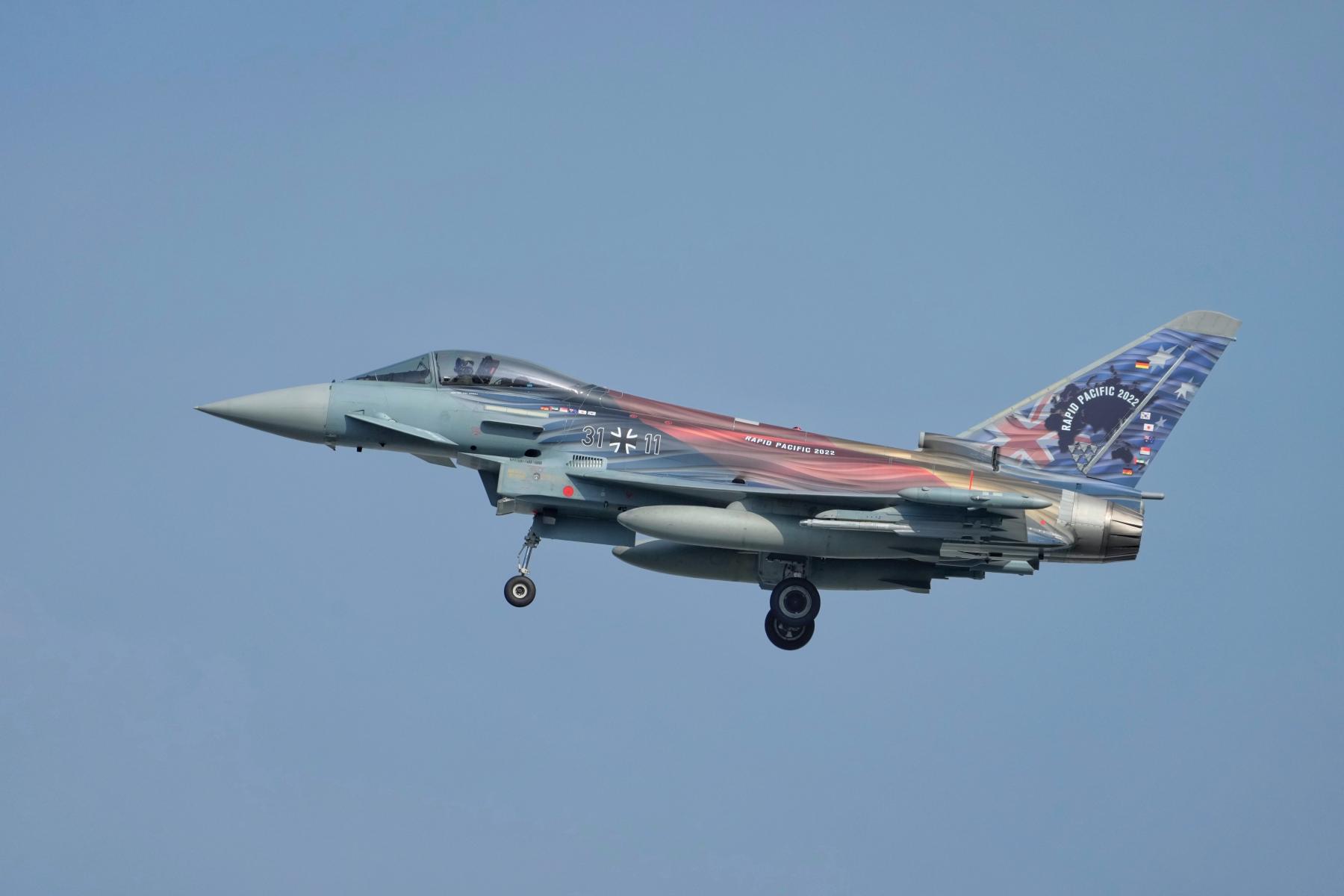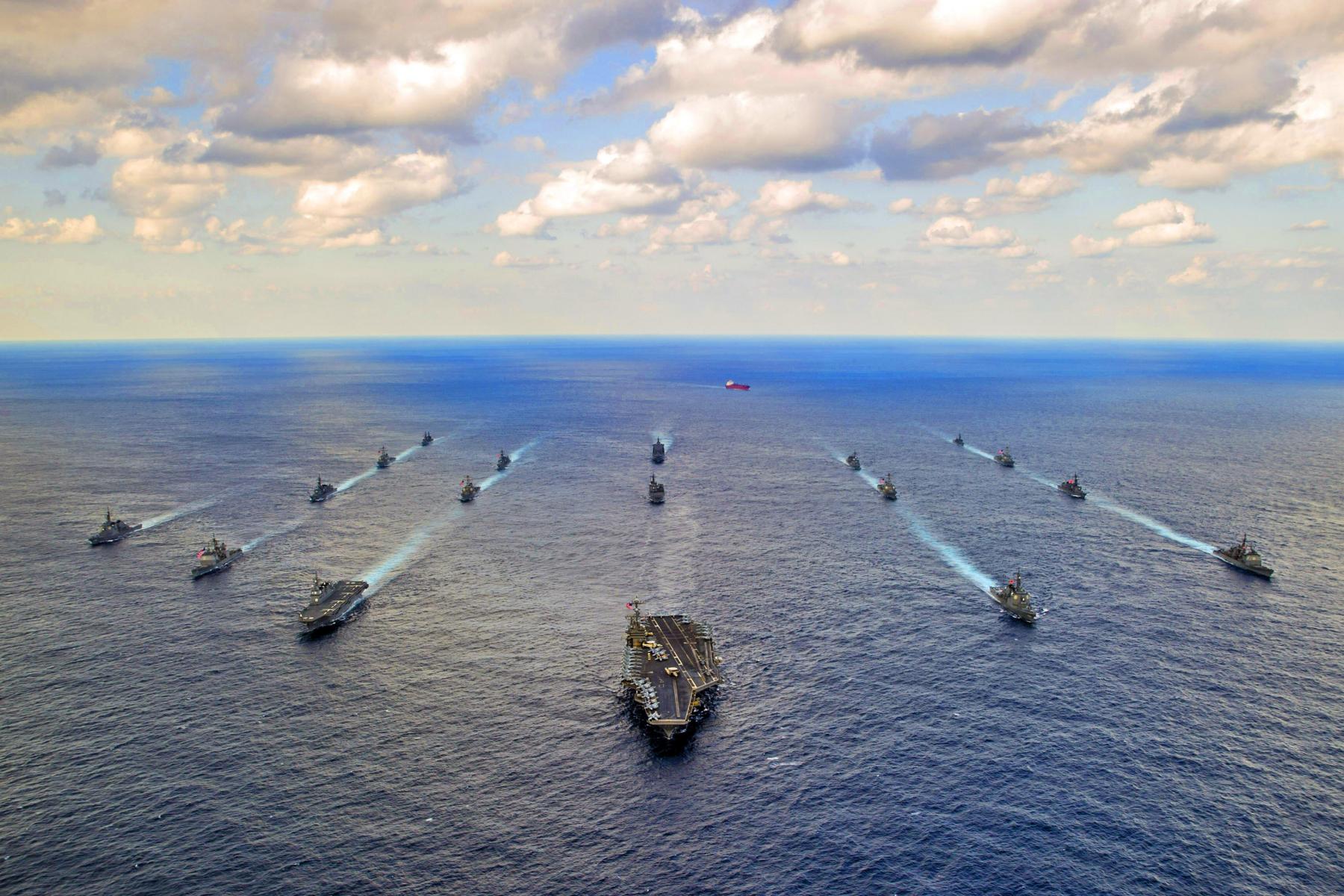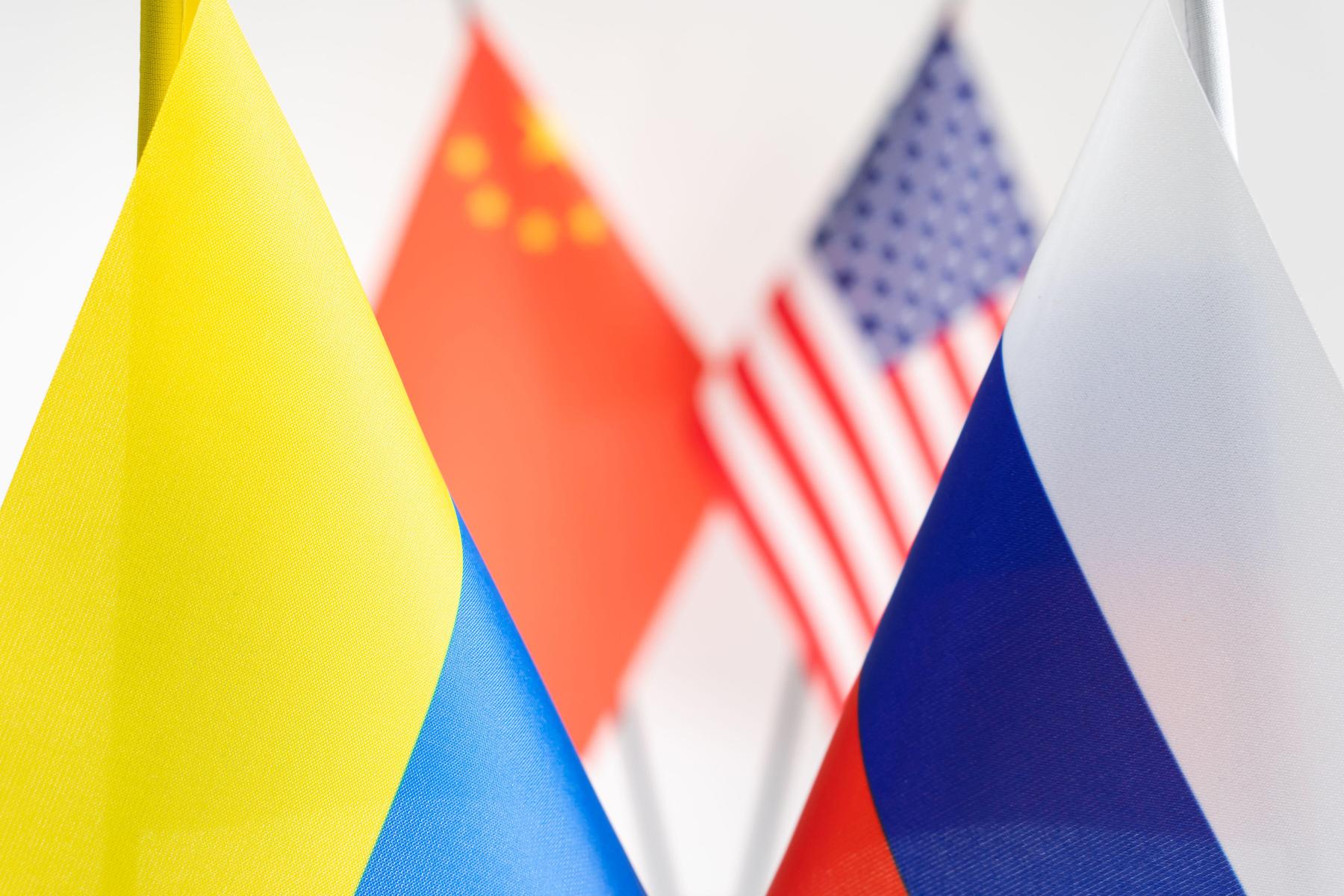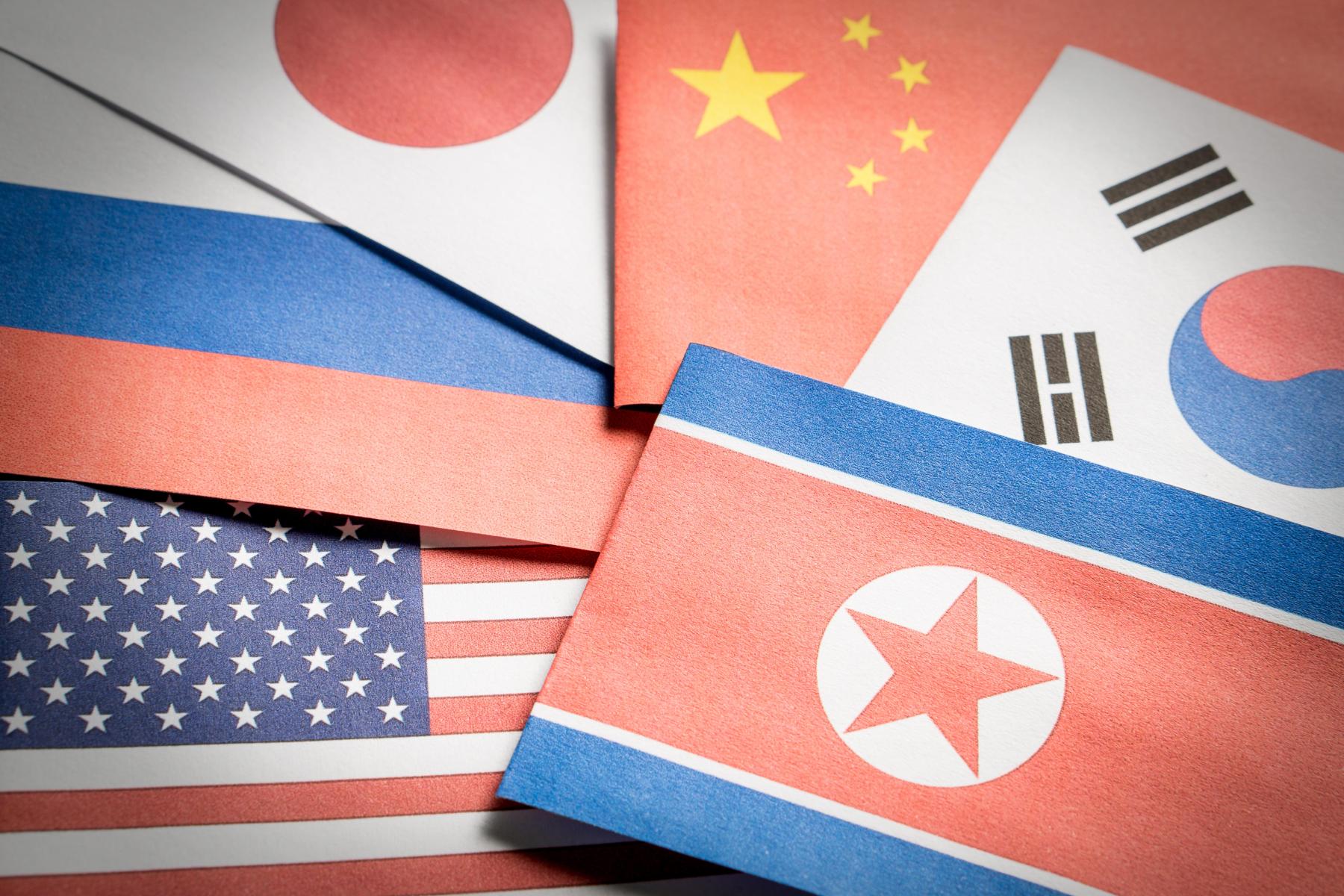Australia finds its way
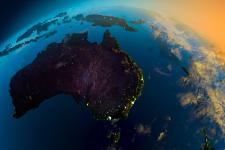
Russia’s invasion of Ukraine shattered illusions of the world as a safe place for small and middle powers. This alarm is hardly confined to Europe. In the Indo-Pacific – the vast maritime region at the global centre of strategic gravity – a long awakening was already underway.
Now the Indo-Pacific’s many middle players are struggling to secure their future in a contested region. Here the repercussions of Putin’s war combine with the gathering tempo of Xi’s push for dominance.
Together, the world’s middle powers – Japan, India, Germany, Australia, Canada, and others – can have a decisive impact on global affairs.
This series of comments from six leading experts explores middle power collaboration in the Indo-Pacific. In response to Russia’s invasion of Ukraine and US-China strategic rivalry, what can middle powers achieve in the pivotal region?
There is no simple pattern to these impacts – or the national responses. The numerous states between China and the United States in this regional great game are diverse in so many ways, including economic development, political systems, military postures, scale of population and territories, strategic culture and national identity. Thus, for instance, the ten states of the Association of Southeast Asian (ASEAN) nations are not only distinct from America’s Quad partners (India, Japan and Australia) but quietly divided among themselves.
But from a European perspective, the experience of Australia is especially illuminating when it comes to understanding how a democratic and developed middle power is responding to the challenges of Russia and China alike – or to questions about what to expect from Washington. This path involves a combination of internal and external balancing: self-strengthening and strategic partnerships. Neither is sufficient, and the two are intended to mutually reinforce each other.
An Indo-Pacific bellwether
Australia has its own singular characteristics. For instance, there is an extraordinary mismatch between its modest-sized population (25 million people) and vast continental and maritime territory. The country is located far from its traditional allies, and it has had a complex quest to find its place in an Asia-centric regional order.
Its contemporary multiculturalism helps – far from the Anglo-Saxon bastion Chinese propaganda depicts, Australia is one of the most ethnically diverse nations in the world, with 29 percent of its population born abroad. So does the concept of the Indo-Pacific, which Australian diplomacy has pioneered for a decade, redefining the nation’s home region as not Asia-only but Asia-plus, reflecting the connectivity of the Pacific and Indian oceans and the importance of global stakeholders in this maritime super-region.
Australia’s diplomatic voyage over recent years helps show the challenge ahead for middle powers everywhere in navigating the geopolitical reefs and shoals of the 2020s. Like so many other nations, Australia for many years staked its security and prosperity on the promise of globalisation. For a resource-rich nation, reliant on free if managed flows of trade, investment, people, technology and knowledge, this made sense.
The economy was relentlessly open, diplomacy underpinned by optimism and engagement, and security policy focused on non-state challenges like terrorism, disaster relief and – where necessary – the stabilisation of neighbouring weak states. Where larger geopolitics came into play – such as the early tremors of China’s rise in the 2000s or moments of crisis on the Korean Peninsula – the United States came to the fore as Australia’s ally and the sole superpower and underwriter of regional peace.
No single turning point explains the recent darkening of Australia’s security outlook or the hardening of its national defences. It is a China story, but not about China alone. Australia has never been capable of providing for more than a portion of its own overall defence, but some steps towards greater security self-reliance came well before the contemporary China challenge.
In the 1980s, a journey began towards self-reliant combat capabilities for the Australian continent, albeit against limited threats. This ‘defence of Australia’ concept was challenged amid the expeditionary demands of the global ‘war on terror’. But echoes can be found today, as Canberra looks anew at the need for deterrence capabilities – like conventional strike – to keep a prospective adversary far from the nation’s shores.
For about a decade from 1997, Canberra fixated on a perceived arc of instability from Indonesia to Papua New Guinea and the South Pacific. Australia led stabilisation operations in neighbourhood trouble spots, notably Bougainville, East Timor and Solomon Islands.
The potential of China as a grave source of security risk had been known to Australian strategic planners for decades, of course, with moments of tension – like the 1995-96 Taiwan Strait Crisis – serving as reminders of what could one day transpire. The notion of resurgent confrontation between Russia and NATO seemed far away. Russia counted for little in Australian geopolitical thinking and was barely taken seriously as an actor in the Asian theatre.

For the first decade of this century, a dominant narrative in Canberra’s external policy thinking was that the rise of China was largely good news. Geopolitical rivalries from the 20th century were diminishing through the logic of economic enmeshment. This story was consonant with Australian short-term economic interests. China was overtaking Japan as the nation’s top trade partner, especially through its appetite for iron ore. The popular sense was that this relationship helped the nation weather the global financial crisis of 2008.
Yet the start of Australia’s security wake-up was also around this time. America’s economic pain gave China’s strategic elite a jolt of confidence. The first ripples of Beijing’s assertiveness were being felt in the South China Sea. And on Australian soil, the nationalist rallying of thousands of Chinese students – to suppress dissident voices during the 2008 Olympic torch relay – was a foretaste of the foreign interference controversy that would flare some years later.
Mandarin-speaking, Australian Labor Prime Minister Kevin Rudd was mistaken by some observers as soft on China: in fact, his defence strategy of 2009 – calling for a modernised navy and expanded submarine fleet – was an early sign Australia was worried against future major power aggression.
To be sure, the external policy settings in Canberra were still mixed. An ‘Asian Century white paper’ in 2012 envisioned a cornucopian future. In 2014, conservative (and otherwise hawkish) Prime Minister Tony Abbott welcomed Xi Jinping to parliament with hopes for a wide-ranging partnership of mutual benefit.
But national security undercurrents were gathering force, driven by Xi’s push for domestic control and regional dominance, and the growing clash of political systems and values. Many international observers were surprised when, from 2016, Australia began toughening its policy settings for self-protection; nominally in a country-agnostic fashion but in practice against China. This was very much a set of independent policy initiatives begun well before the Trump Administration hardened America’s own China stance; indeed, Australia – along with Japan – arguably led the way. Under the conservative governments of Malcolm Turnbull and then Scott Morrison, a wide-ranging national security effort included laws to criminalise foreign interference, a ban on foreign political donations and new federal limits on subnational engagement with external powers.
Intelligence funding and powers increased, new security-related departments and agencies were established, and security screening on foreign investment tightened. Defence modernisation was pursued with a stress on conventional capabilities for deterrence and warfighting in a maritime region.
Internationally, Australia stepped up its involvement as a development and security partner in the South Pacific, pushed for the revival and rapid deepening of the Quad, strengthened alliance cooperation with the United States, and initiated the 2021 AUKUS defence technology arrangement with the United States and the United Kingdom. This involves the extraordinary decision to acquire nuclear-powered submarines. It was an historic departure for a middle power with a long aversion to nuclear energy: perhaps even more stunning a change of course than the 2022 decision of Sweden and Finland to join NATO.
Full-spectrum balancing
All these moves need to be understood in light of Australia’s difficult choices as a middle power in a contested Indo-Pacific, where many nations now hold profound concerns about China’s massive military expansion and its demonstrated willingness to coerce or compromise the sovereignty of smaller powers. But there is also an important global dimension, including Russia’s aggression against Ukraine.
Strikingly, the Labor government of Anthony Albanese, elected in May 2022, has kept all the security building blocks put in place by conservative governments. Indeed, Australia’s progressive government – even in a worsening economic climate – is promising more robust and accelerated defence capabilities, with a strategic review due for release in early 2023.
This is even though Labor’s foreign policy settings and rhetoric place more emphasis on respectful engagement with Southeast Asian and Pacific neighbours (including through a more progressive stance on climate change). Notably, Australia has sustained outspoken bipartisan support for Ukraine, including in supply of military equipment, despite the ambivalence of many of the Asian nations that Canberra needs to work with in managing the China challenge.
The new Australian government is promoting a ‘stabilisation’ of relations with China. Rhetoric is cautious and disciplined. This is intended as a contrast to the Morrison government’s willingness to get ahead of the global pack as one of China’s most forthright critics, including in calling for an independent inquiry into the origins of the COVID-19 pandemic. But the policy settings seem little changed. Since 2020, Australia has weathered economic sanctions (especially against agriculture) and public opinion across the political spectrum has become deeply suspicious of Beijing.
Labor harbours no illusions that relations with China can be founded on trust. Foreign Minister Penny Wong talks of the need for ‘strategic equilibrium’ in Asia. But in a region where China seeks hegemony, this does not mean equidistance between China and America. Rather, it seems a polite way of talking about full-spectrum balancing involving diplomacy, economics and development as well as hard power; and working with a wide range of partners to ensure that what remains of regional order is preserved and temptations for aggression constrained.
None of this preparedness guarantees that Australia will be fully ready for the storms ahead. Like most democracies, this is a nation that remains less than the sum of its parts when it comes to being ready to mobilise for crisis. For instance, Australian politics, following the unpopular deployment of conscripts to the Vietnam War, has long been allergic to the idea of national service. The private sector and subnational levels of government remain only loosely connected to the national security effort. And the nation’s cyber security vulnerabilities are manifest: as underscored in recent breaches in the telecommunications and healthcare sectors.
But Australians recognise that major power war is now a 21st century reality: that what has occurred in Europe today could erupt in the Indo-Pacific tomorrow, especially with China’s regular threats to seize Taiwan. The COVID-19 pandemic, Putin’s war, China’s strategic tensions with other powers: all these factors may have strained or jeopardised supply chains and other global economic interactions in different ways. But in the island continent of Australia, for the public mood and policy thinking, the consequence has been to fan security anxieties about economic dependence and long complacency about national preparedness. Resilience, diversification and deterrence have become watchwords in the policy debate. In a nation that prides itself on the saying ‘no worries’, there are worries aplenty and no hiding from the woes of the world.

